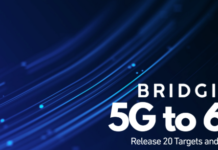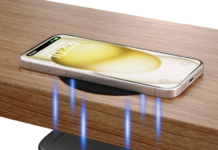6G UAE Hits 145 Gbps with Upptäckt RF Drive Test Tools & Wireless Survey Software
A recent pilot in the United Arab Emirates has pushed wireless boundaries by successfully operating a 6G terahertz (THz) link at approximately 145 gigabits per second (Gbps). This marks the first known trial of THz frequencies for 6G in the Middle East.
This result matters because THz bands (typically in the 0.1–10 THz region) promise orders-of-magnitude more spectral bandwidth than sub-6 GHz or millimeter-wave frequencies. However, propagation losses, hardware constraints, and signal processing demands increase sharply at these frequencies. The UAE experiment offers real-world data on how these tradeoffs play out at scale. So, now let us look into Pioneering 6G THz Trial in UAE Hits 145 Gbps Throughput along with User-friendly LTE RF drive test tools in telecom & Cellular RF drive test equipment and User-friendly Wireless Survey Software Tools & Wifi site survey software tools in detail.
Trial Setup & Achievements
The trial was conducted in collaboration between a UAE telecom organization and an academic research center in Abu Dhabi. It demonstrated these capabilities:
- Sustained peak throughput near 145 Gbps over a THz link
- Use of new test hardware (transceivers, antennas, up/down converters) adapted for the THz band
- Initial validation of link stability under controlled (likely short-distance, line-of-sight) conditions
- Integration of the pilot with broader research efforts, including a white paper on spectrum evolution and enabling technologies
This throughput target exceeds many commercial 5G deployments and pushes into the terabit class backhaul domain (when aggregated or over multiple parallel links). It also helps examine THz fading, phase noise, synchronization, and error correction at extremely high data rates.
Technical Challenges at THz
Operating in the THz bands introduces several physical and engineering hurdles:
- High path loss & atmospheric absorption
At frequencies above 0.1 THz, free-space loss and absorption by gases (e.g. water vapor) sharply reduce link range. Signal power decays faster with distance than at lower bands. - Beamforming & antenna design
Narrow beams are needed to concentrate energy, necessitating precise beam alignment, tracking, and stability. Antenna arrays and advanced beam steering are key. - Phase noise & hardware imperfections
Oscillator stability, mixer linearity, and frequency conversion all become more demanding as frequency increases. Small impairments grow worse in relative terms. - High-speed data handling
Sampling, ADC/DAC, and baseband processing must support tens or hundreds of GHz of bandwidth in aggregate. This calls for high-speed electronics, low-latency fabric, and optimization of digital signal processing paths. - Thermal, packaging, and integration issues
Devices at THz must manage heat, parasitics, and electromagnetic isolation. Integration of THz front ends with baseband modules is nontrivial.
By running this pilot, the UAE team could capture empirical data on these effects: which impairment dominates, how link margins evolve with distance and weather, etc.
Enabling Components & Future Directions
To support THz communication, several enabling modules are under exploration:
- Reconfigurable intelligent surfaces (RIS)
These are surfaces that manipulate incident electromagnetic waves (reflection, beam steering, focusing) dynamically. They can help route THz signals around obstacles or mitigate shadowing. - Integrated sensing and communication (ISAC)
The concept is that radio links can also sense environment (e.g. as radar), enabling adaptation of the communication link based on context (blockages, mobility). The trial supports exploring how THz links can double as sensing paths. - AI-native network control
Using machine learning or control loops embedded in the network stack to dynamically tune parameters (power, beamforming, modulation) in response to real-time feedback. - Post-quantum / enhanced security
As wireless reaches higher speeds and wider reach, security threats also evolve. Embedding stronger cryptographic frameworks (resistant to future computational threats) becomes relevant. - Non-terrestrial network integration
To ensure continuity in remote or aerial zones, integrating high-altitude platforms or satellites with THz-based ground infrastructure may become part of next-gen networks. Some architectures consider combining terrestrial THz links with non-terrestrial nodes for coverage redundancy.
Implications & Next Steps
Achieving 145 Gbps in a THz trial provides a reference point (a benchmark) for future 6G research. It helps quantify:
- How fast THz links can be in practical scenarios (vs theoretical maxima)
- What link margins and fading margins must be budgeted
- The kind of hardware calibration and compensation (phase noise, frequency drift) needed
- Whether THz is viable for urban use cases, backhaul, or specific high-throughput corridors
For future work, scaling distance, testing mobility (moving nodes), more complex environments (urban, non-line-of-sight), and multi-link aggregation will be vital. Also, integration with existing 5G-A or 5G-Advanced layers to support backward compatibility will be essential.
Moreover, this trial helps position the UAE as a contributor (not just consumer) in setting 6G standards. By running hardware pilots and producing data, the country can participate in standard bodies, offer testbeds, and attract research partnerships.
About RantCell
RantCell is a cloud-based mobile network testing platform designed to measure 2G, 3G, 4G, and 5G network performance using standard Android smartphones. It enables operators, system integrators, and enterprise users to perform field tests without dedicated hardware. The platform supports automated testing for parameters such as signal strength, throughput, latency, coverage, and call performance, offering real-time analytics through a web dashboard.
RantCell is used for both indoor and outdoor network assessment, QoE validation, and benchmarking. The solution helps in identifying network gaps, optimizing site rollout, and improving service quality across different network technologies. Also read similar articles from here.




